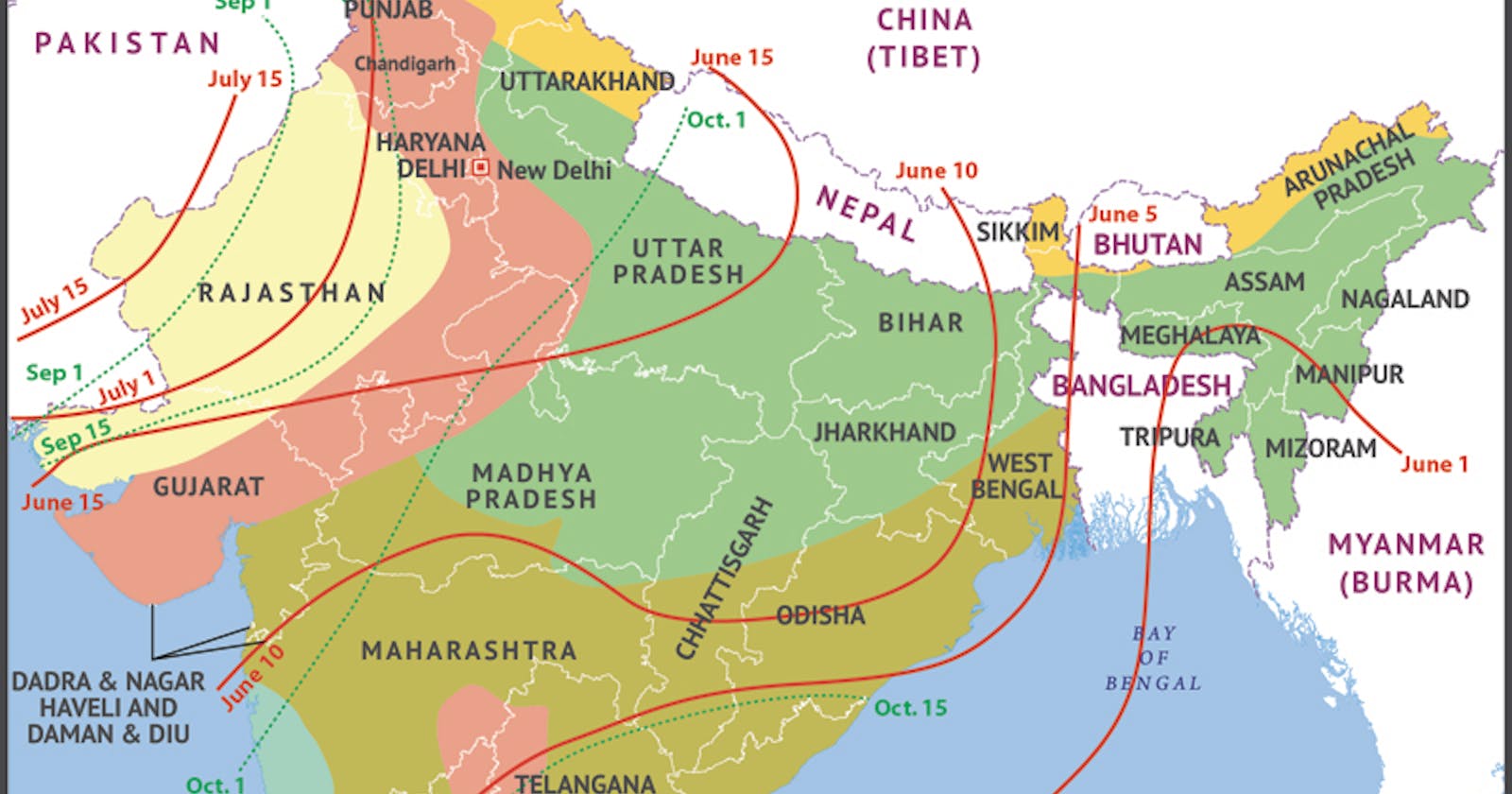Careers in Climatology - What and Why ?
"Everyone complains about the weather, but nobody ever seems to do anything about it." - Attributed to a famous weatherman, Willard Scott.

In this age, we can do something. Of course, I do not mean that we can produce the weather we desire, although, we, humans contribute to creating the destructive weather we do not want through our actions. So, what can we do? With modern tools and information we can do a lot on multiple fronts - (i) understand the weather in our region much better, (ii) obtain real time information about the developing weather from ground observations, satellite and models - all in our palms and (iii) plan and make decisions that mitigate risks and impacts of potential extreme weather.
Each year during the first week of June, almost like clockwork, the southwest monsoon over the coast of Kerala and advances to the foothills of the Himalayas through early July. The rains bring life to the Indian sub-continent for they come after scorching heat during March to May, and thus orchestrates the blooming of vegetation, crops and replenishes the parched landscape. Hence, it captures our imagination and memorialized in our culture, folklore and religion. We all have our own monsoon stories such as the first time as little kids we made paper boats and let it float in the puddled monsoon rains - and others. Of course, too much of it brings floods and too little, droughts. This uneven distribution of rainfall from year to year and from place to place, over India makes it challenging to, sustainably manage our resources - water, agriculture, economic and public health.
Similarly like clockwork, the monsoon starts its retreat from the Indian subcontinent back to the oceans, from whence it came, starting early October. It is during this retreat, October to December, when the northeast monsoon begins, life in Chennai and other parts of South East India - Tamil Nadu and coastal Andhra Pradesh - gets on edge. Rain systems develop in western Indonesia and eastern Bay of Bengal and they wander their way towards Tamil Nadu and Andhra coast and interiors. Where do these systems land?, how much rain do they bring? For how long? What will be the flooding impact? Should I evacuate home? When should I leave? These are all questions that people have during this period, more so when the systems are spotted in the Bay of Bengal.
It is then that the populace looks to anybody to portend the future, from official, Indian Meteorology Department (IMD) to self-styled weathermen (mostly, as I have not seen a weatherwoman) on the internet, to the whole bunch of ignorant folks from the University of WhatsApp who can forward anything with a map and, to soothe sayers. Once the season ends in December, everyone goes back to their ways and forgets about weather, until the next rains - rinse and repeat.
How is it that the monsoon rains come about like clockwork, yet exhibit so much variability in space and time? Have they been this way over long time? Why do we have different monsoons? What is the difference between climate and weather? Why do we have frequent floods? How do they predict weather and climate? What background do you need to have to understand them?. How can I build a good career studying these concepts?
The answer to these questions require knowledge in exciting inter disciplinary areas connecting physics, applied mathematics, engineering and data science - that are in the forefront of modern research areas and have far reaching applications to other areas.
In this multi part column, I will explain these concepts and discuss about the institutions in the country and the world specialising in these areas.
STAY TUNED ...

